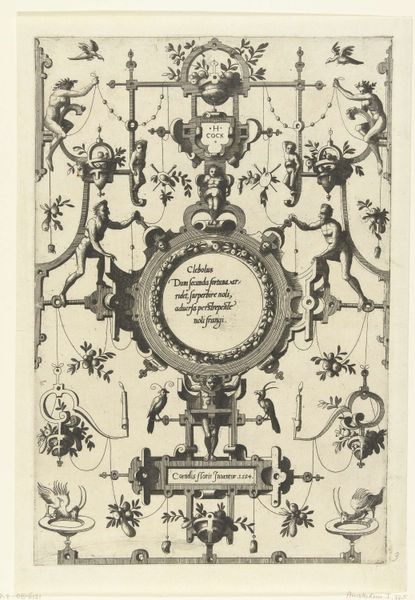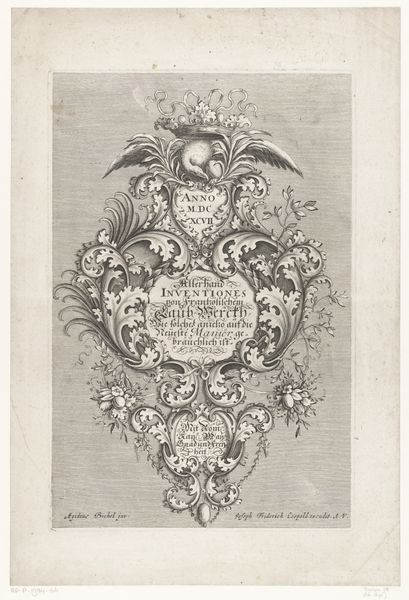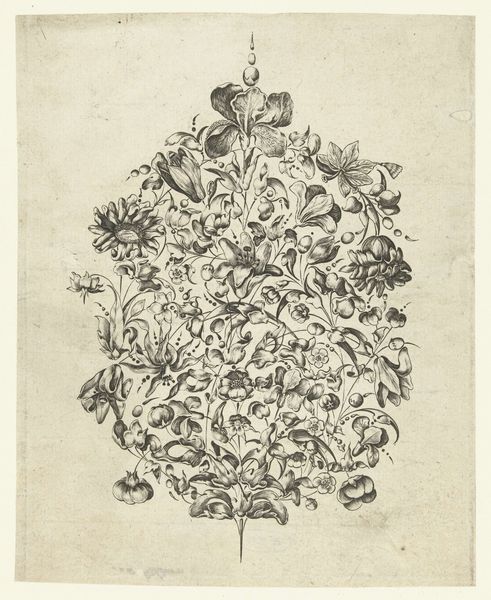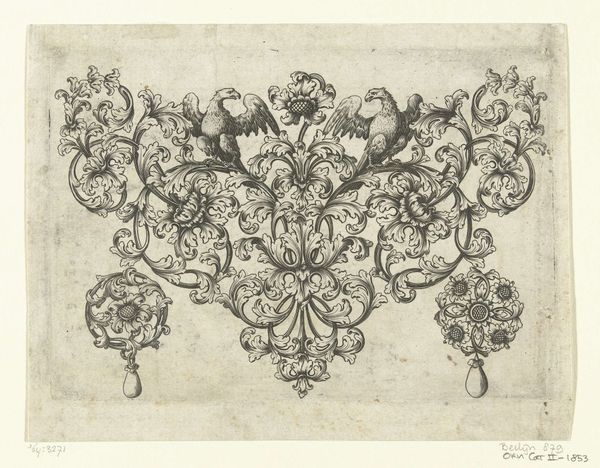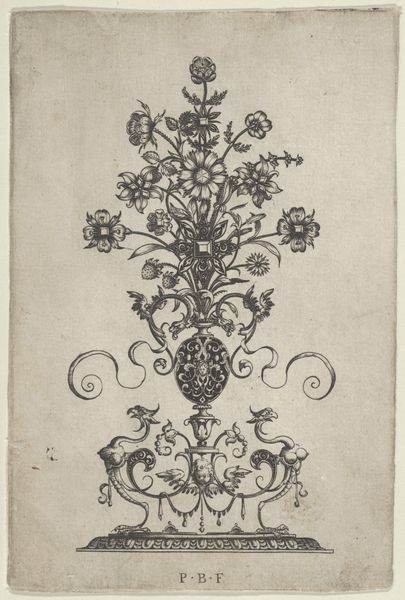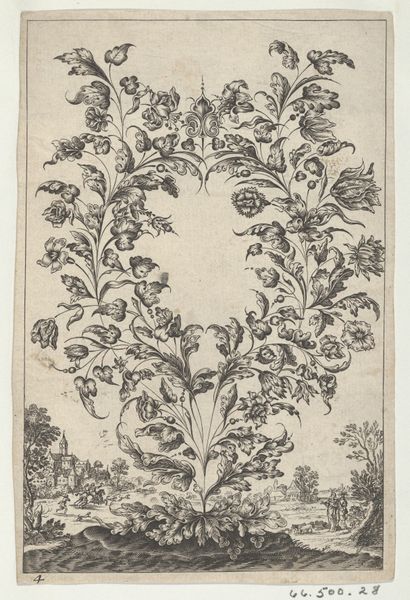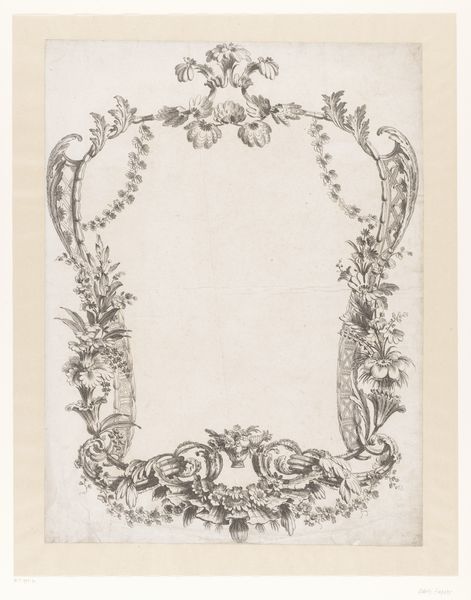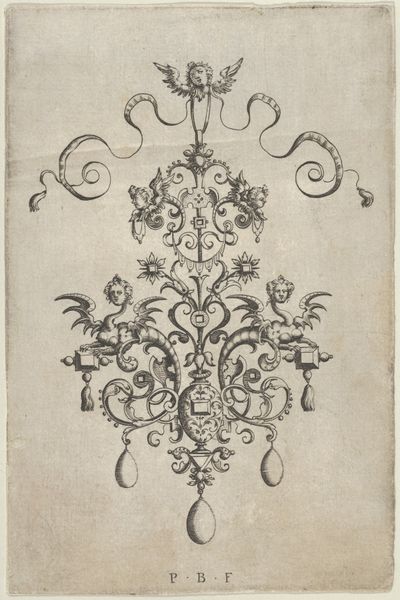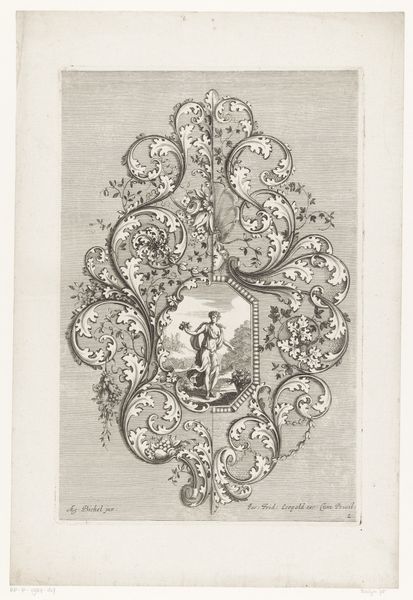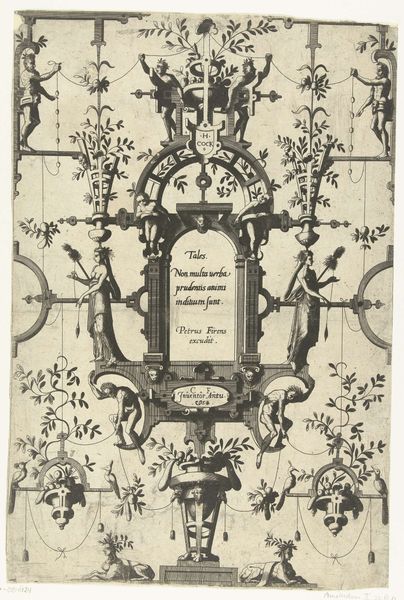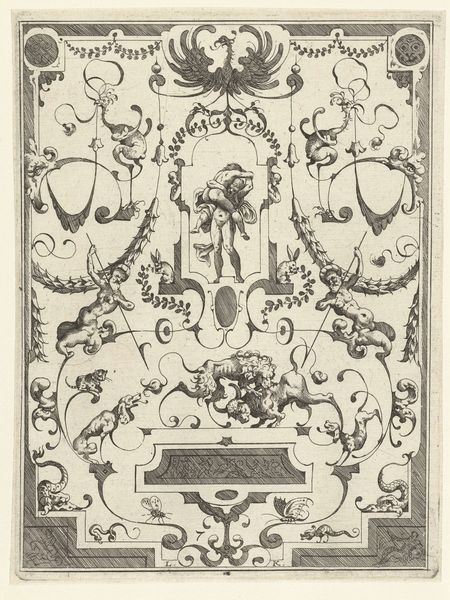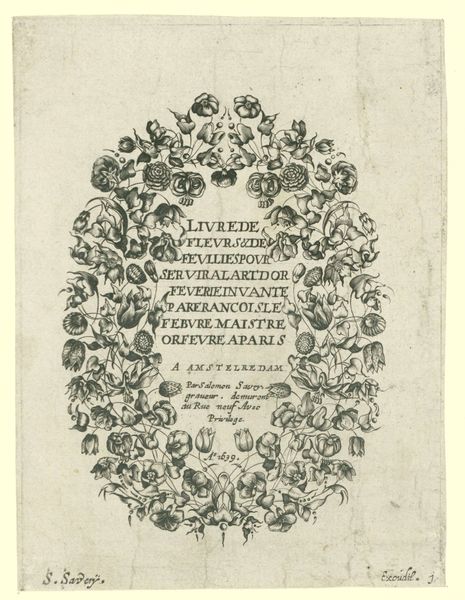
graphic-art, print, engraving
#
graphic-art
#
baroque
# print
#
old engraving style
#
personal sketchbook
#
ink drawing experimentation
#
line
#
sketchbook drawing
#
sketchbook art
#
engraving
Dimensions: height 198 mm, width 145 mm
Copyright: Rijks Museum: Open Domain
Curator: This engraving before us, dating to 1638, is titled "Titelblad: Looff-werck Boeck Seer Constich Geteijckent." The Rijksmuseum holds this impression of Willem Hondius’s print. Editor: The looping line work immediately draws me in. It feels like peering into a dense, fantastical garden, overgrown yet deliberately ordered. I appreciate its symmetry. Curator: The title translates roughly to "Title page: Leaf-work Book, very artfully drawn," giving us a sense of its purpose as a demonstration piece for artists, goldsmiths maybe even. The looping forms, as you noticed, were meant to be templates. Editor: It is an assertion of controlled naturalism from that baroque moment; each stem, leaf, and bud stylized yet still retaining a certain botanical essence, no? I mean, what's your take on this artist's engagement with these traditional forms during that time? Curator: Hondius situated this work within a well-established tradition of pattern books popular with artisans and designers. Its function wasn’t high art, but rather commercial, addressing a need for accessible design motifs that reflect elite tastes filtering downward into the craftsman sphere. Editor: Interesting. The text nestled so intimately amongst the leaves strikes me. Who was it intended for? Also, its visual accessibility speaks volumes. It’s about democratizing beauty and creativity to me. I feel this breaks away from elitist narratives around art. I feel that art making shouldn’t only live in these elite, academic circles but also within the community and accessibility of shared art-making and creativity, and maybe that’s part of the original intention. Curator: Well, Hondius certainly leveraged existing markets and systems of artistic production. And considering the number of surviving prints, it seems there was an avid interest among various practitioners. It circulated quite readily, fulfilling that goal, at least partially. Editor: To me, it shows the evolution of art's societal role. This transition suggests more inclusivity of cultural dialogues and challenges those rigid social structures back then. This feels profound. Curator: Looking closer, the artist demonstrates an expertise with line and form, adapting traditional design motifs to engage his contemporary audience. It tells a great deal about artistic exchange in that period. Editor: Agreed, it's a quiet statement about art and community, resonating through centuries. Curator: Precisely, offering unique insight into 17th-century artistic and socio-economic exchanges, I believe.
Comments
No comments
Be the first to comment and join the conversation on the ultimate creative platform.

